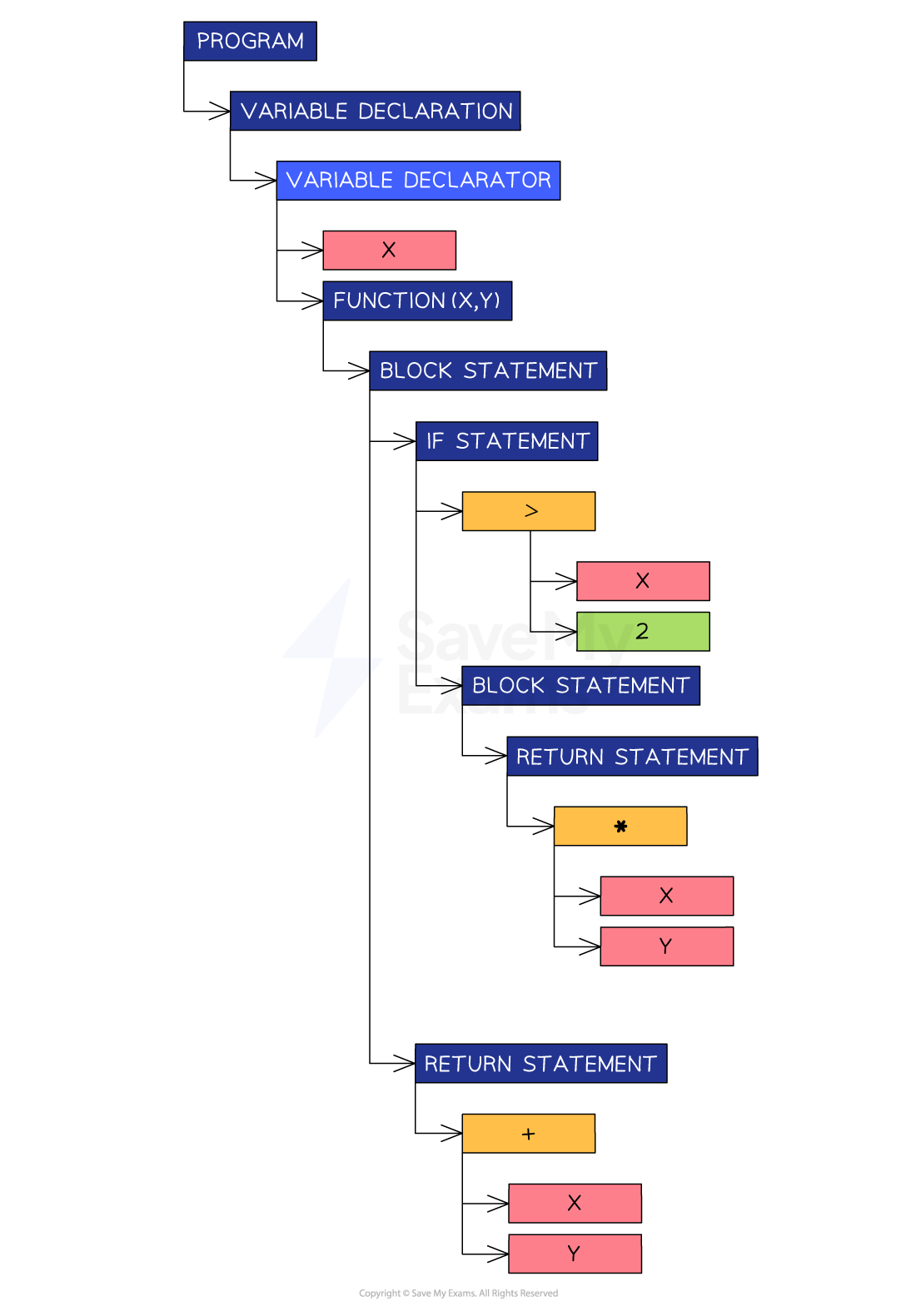Translation Process (Cambridge (CIE) A Level Computer Science): Revision Note
Exam code: 9618
Interpreter execution
What is an interpreter?
An interpreter is a type of translator that executes high-level code line by line
It does not convert the entire program into a separate machine code file
How does it work?
The source code is read, analysed, and executed one line at a time
No complete machine code file is produced, only immediate execution happens
If there is an error in a line, execution stops, and the error is reported immediately
Feature | Explanation |
|---|---|
No output file | It does not generate a standalone |
Immediate execution | Runs the code as it is interpreted |
Slower execution | Each line is translated every time the program runs |
Useful for development | Good for testing and debugging during coding |
Stops on first error | Detects and reports errors as they occur |
Example use cases
Used in educational tools, like Python shells or BASIC interpreters
Helpful for rapid prototyping or when frequent changes are made
Compilation stages
What is compilation?
Compilation is a process that translates a program written in a high-level programming language into machine code
Only machine code can be executed by a computer
There are four stages involved in this process:
Lexical Analysis
Syntax Analysis
Code Generation
Optimisation
Lexical analysis
In A Level Computer Science, lexical analysis means studying the words or vocabulary of a language
This stage involves identifying lexical 'tokens' in the code
Tokens represent small meaningful units in the programming language, such as:
Keywords
var, const, function, for, while, if
Identifiers
Variable names, function names
Operators
'+', '++', '-', '*'
Separators
',' ';', '{', '}', '(', ')'
During this stage, unnecessary elements like comments and whitespace are ignored
For example, if the following code is being compiled:
var x = function(x,y) {
if(x>2) {
return x*y;
}
return x+y;}
The result of lexical analysis is a token table
| Token | Type |
|---|---|---|
1 | var | Keyword |
2 | x | Identifier |
3 | = | Operator |
4 | function | Keyword |
5 | ( | Separator |
6 | x | Identifier |
7 | , | Separators |
8 | y | Identifier |
9 | ) | Separator |
10 | { | Separator |
11 | return | Keyword |
12 | x | Identifier |
13 | * | Operator |
14 | y | Identifier |
15 | ; | Separator |
16 | } | Separator |
Syntax analysis
Now that tokens have been identified, syntax analysis makes sure they all adhere to the syntax rules of the programming language
A symbol, e.g. '$' could be a valid token but not a valid character according to particular programming languages
The dollar symbol would be flagged as breaking the syntax rules
Other syntax errors programmers commonly make include mismatched parentheses or missing semicolons
If the code passes the syntax analysis, the compiler can create an Abstract Syntax Tree (AST)
An AST is a graph-based representation of the code being compiled
An AST is an efficient way to represent the code for the next step
Example abstract syntax tree
For the same code as above, the following abstract syntax tree can be created

Abstract syntax tree
Code generation
This step takes the AST and traverses it to generate object code that can be executed by the computer
Optimisation
This step modifies the code to make it more efficient without changing its functionality
This is important to attempt because it reduces the memory required to run the code, which leads to faster execution
A common optimisation action is removing duplicate code
If an 'add' function is written twice in the source code, a sophisticated compiler will notice this and include it only once in the object code

Unlock more, it's free!
Did this page help you?